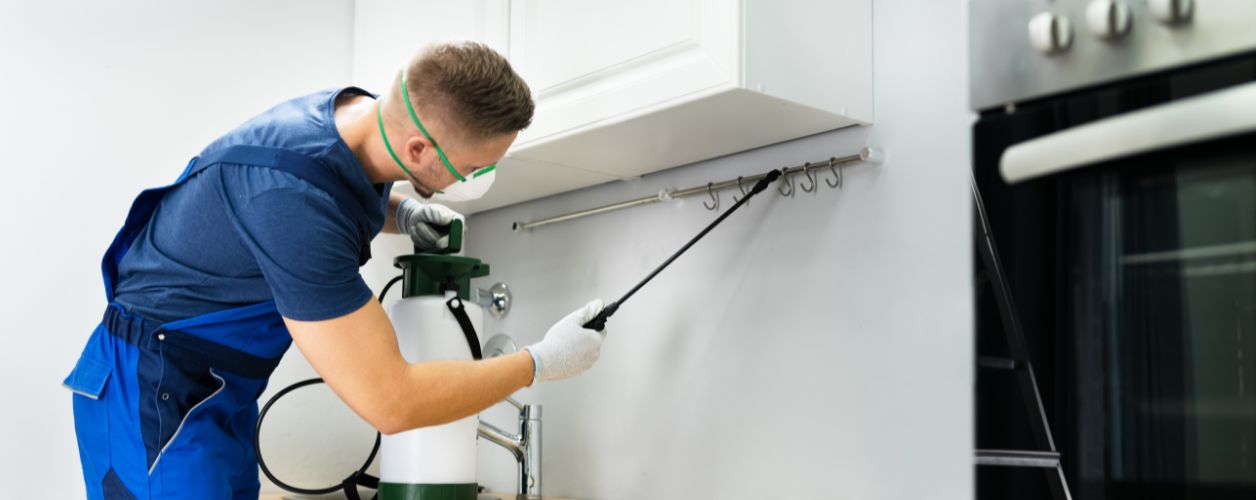
Get free quotes
Get free quotes within minutes

Pests can be a common problem in every household and garden. They come in various forms, including insects, rodents, birds, and other animals. These pests harm your plants, your property, and even your health. You need pest control that works to keep your space safe.
There are three types of pest control: physical, chemical, and biological, and each has advantages and disadvantages, working differently on a particular population of pests. You can go for one pest control method according to the requirement, or even adopt a combination of them for better results.
| Control Method | Options | Commonly Used For |
|---|---|---|
| Physical | Traps, barriers, netting, fencing, sealing entry points, vacuuming, heat, and sound | 🐭 Mice & Rats, 🐿️ Squirrels, 🐾 Moles, 🐜 Ants, Bed Bugs, 🐝 Wasps, Cockroaches, 🕊️ Pigeons, 🦊 Foxes |
| Chemical | Insecticides, rodenticides, sprays, baits, fogging, fumigation, repellents | 🐭 Mice & Rats, 🐜 Ants, Cockroaches, Bed Bugs, 🐝 Wasps, 🐾 Fleas, Silverfish, Woodworm |
| Biological | Using natural predators or pathogens (e.g., nematodes, bacteria, enzymes) | 🐛 Lawn pests, Woodworm (via fungal decay agents), 🐜 Ants (natural predators), garden pests |
Physical pest control uses solid materials or devices as barriers to pest entry. Either kills the pests or protects the homes, gardens, or property by keeping them out. Because there are no toxic materials involved in the process, it is safe for plants, people, and even pets.
The following are the most typical physical pest control equipment:
Physical methods work best as a first line of defence. They stop pests from entering and reduce their numbers before a full infestation happens.
Chemical pest control employs poisonous materials that destroy the pest. Chemicals directly affect the pest and are effective immediately. Individuals employ this method whenever infestation is vast or in progress rapidly.
Below are the most prevalent chemical pest control procedures:
You must use chemical methods cautiously. Always read the instructions and keep them out of reach of food and children. Do not overuse them to protect the environment and prevent pest resistance.
Biological pest control employs nature to manage pests. This type of control is done by modifying the environment or introducing natural predators. It does not involve the use of chemicals or machinery.
The following are the most frequent biological pest control measures:
Biological control is best for gardeners who desire a natural and green method. It functions best when applied long-term to achieve balance.
You must select the appropriate pest control technique for your case. Typically, consider the following:
More often than not, employing more than one tactic is best. For instance:
Using multiple methods provides you with a greater opportunity to be able to control pests completely and keep them from returning.
| Pest Type | Common Control Methods |
|---|---|
| Mice / Rats | Bait stations, snap traps, electronic traps, sealing entry points, and rodenticides |
| Wasps | Nest removal, insecticidal sprays, dust treatments, and wasp traps |
| Ants | Gel baits, perimeter sprays, granular treatments, barrier methods |
| Bed Bugs | Heat treatment, insecticide spraying, mattress encasements, vacuuming, and steam cleaning |
| Cockroaches | Gel baits, residual sprays, growth regulators, and sanitation improvements |
| Fleas | Insecticidal sprays, fogging, vacuuming, pet treatments, and steam cleaning |
| Silverfish | Dehumidification, residual sprays, traps, and removing food sources |
| Spiders | Web removal, insecticidal sprays, sealing entry points, and reducing clutter |
| Birds (Pigeons) | Spikes, netting, wire deterrents, bird repellent gel, falconry (in commercial areas) |
| Squirrels | Live trapping, proofing entry points, deterrent sprays, and ultrasonic devices |
| Moles | Trapping, gassing (fumigation), sonic deterrents |
| Bees | Humane removal by bee specialists, hive relocation (especially for honey bees) |
| Woodworm | Chemical treatment (spray or injection), fumigation, wood replacement |
| Foxes | Humane deterrents, fencing, repellents, and professional wildlife control services |
Pests may destroy your garden and damage your house. You can prevent them by using physical, chemical, or biological methods. Each method has its pros and cons. Pick the one that is suitable for you based on your requirements. In most situations, using a combination of methods is the best way to eliminate pests and prevent them for life. Through the application of these pest management methods in the right manner, you can have a healthy, safe, and clean home and garden.